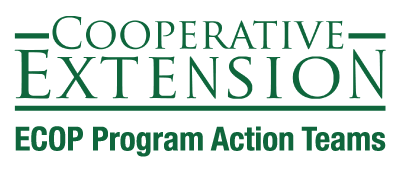Program Action Teams
Diversity, Equity, and Inclusion
Background
Vast inequities exist among different racial and ethnic groups, touching lives across many sectors and impacting quality of life. These inequities include income, educational attainment, healthcare access, food security, home ownership, and broadband connectivity. Each of these impact length of life, safety/security, and a sense of well-being for individuals and families in direct ways. As a result, the color of a person’s skin or ethnic identity is a fairly good predictor of life outcomes, with Black, Indigenous, and People of Color (BIPOC) consistently falling behind their White counterparts. Similar divides exist over issues of gender, religious affiliation, native language, and abilities, with each quality having groups that are marginalized and others that are not. How do we change our nation’s path forward so that marginalized individuals can securely achieve the quality of life standards with the same ease as those that are of a dominant group?
Closing the DEI Gap
Communities narrowing Diversity, Equity, and Inclusion (DEI) gaps can advance quality of life for all their members. When those struggling to survive in the community thrive, the whole community benefits as trust increases and community assets (social, human, financial, built, political, cultural, natural) are advanced. However, choosing to maintain the “status quo” ensures a downward spiral in which divides continue, or more likely, increase inequities and continue to create burdens that all bear.
How is the Cooperative Extension System responding?
The Cooperative Extension System’s (CES) 100+ year history of working to meet the identified needs of individuals and communities is advanced through county Extension offices. This embedded network can effectively link local needs to university resources. CES is often viewed as a trusted resource at the local level, positioning staff as collaborators, partners, and convenors for difficult conversations. Through dialogue, trust is built, paving the way for genuine, honest conversations and unpacking layers of silence which serve to stall meaningful progress. CES can work with communities to organize, convene, and facilitate relevant dialogues among diverse groups, so that together, informed decisions can be made about removing past barriers and building new opportunities for the future. Building on trust, CES can bring resources through its multi-disciplined approaches to support building wealth by helping to educate families on estate planning and preventing/resolving heirs’ property; closing the digital divide by teaching digital skills; supporting health through guidance on nutrition, exercise, and chronic health prevention/management; guiding socially disadvantaged farmers and ranchers in farm management decision-making; guiding youth toward social and workforce skills and careers resulting in economic independence; empowering communities to identify and leverage community assets; and building capacity among disadvantaged groups to develop, use, and appreciate their voice. Examples include: Coming Together for Racial Understanding, Diversity, Equity, and Inclusion in 4-H, Heir Property Network, True Leaders in Equity Institute, 4-H Tech Changemakers, Socially Disadvantaged Farmers and Ranchers, 1890 Centers of Excellence, Juntos Program, Expanded Food and Nutrition Education Program (EFNEP), Extension Disaster Education Network, and the Rural Online Initiative.
What difference is Cooperative Extension making?
CES is making a real difference through Coming Together for Racial Understanding dialogues that build trust across divides and inform place-based action plans. CES Agriculture and Natural Resources programs guide socially disadvantaged farmers and ranchers toward developing thriving enterprises and advancing wealth. Resolving/preventing heir’s property issues is one aspect of this. 4-H Youth Development efforts, such as Tech Changemakers and STEAM education, are preparing youth to attain valuable leadership and workforce skills. Family and Consumer Science programs, such as the Expanded Food and Nutrition Education Program (EFNEP) are advancing healthy lifestyles, guiding adoption of good financial management practices, promoting positive parenting, and fostering small business development. Community Resource Development efforts promote leadership development, entrepreneurship, and community asset management/leveraging and planning. Each of these areas are examples of where CES is making a difference on issues where the nation is struggling with DEI divides. CES is well positioned to advance successful work already underway towards even greater impact in the future.
What can be done with additional resources and partnerships?
Increased resources to support CES efforts have great potential for closing the DEI gap. For instance, expanding the reach of Historically Black and Tribal Land-grant Universities that have specific missions of reaching underserved audiences put tools directly in the hands of those most at-risk. Additionally, growing the CES workforce numbers and capacity allows for the expansion of community dialogue-to-change efforts, advancing programs with proven track-records, embedding deeper support for communities through community coaches, and facilitating demonstrable models of community asset building strategies. CES is well positioned to manage place-based funding to launch promising innovations identified through community dialogues. Finally, CES can guide the development of a national research initiative to explore efficacy of local innovations and implications for future policy related to DEI.
Contact Information
PAT Leaders:
Michael Wilcox
USDA-NIFA Liaison:
Maurice Smith Jr, Ph.D.



